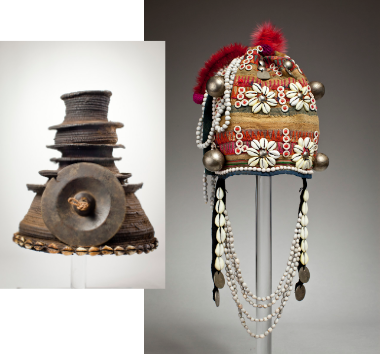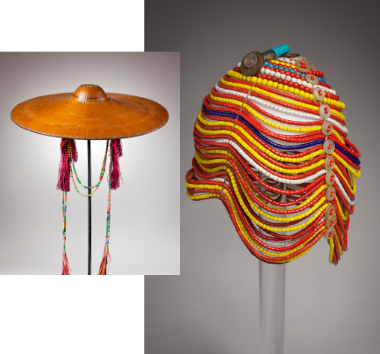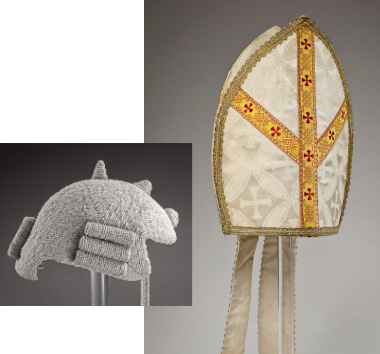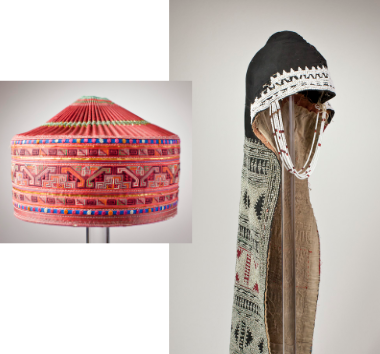THE GLOBAL LANGUAGE OF HEADWEAR:
CULTURAL IDENTITY, RITES OF PASSAGE, AND SPIRITUALITY
“Hats and headdresses are a unique and powerful lens through which one can view the human experience."
– Stacey W. Miller, Hat Horizons
Curator, The Global Language of Headwear
A hat—from its perch atop the most prominent part of the body—proclaims to the world who we are, where we live, what we believe, and how we fit into the communities of which we are part. More than just a frivolous adornment, a hat is a tool that expresses a person’s identity and personal taste as well as one’s place in the world. It may also serve as a badge of social rank and as a symbol of faith and values.

Consider those people who, because of appearance, behavior or beliefs, appear to be different from you, but whose personal stories perhaps parallel your own. An awareness of what hats and headdresses represent can foster a keener understanding of others by deepening your knowledge and appreciation of disparate cultures and other walks of life.

More importantly, hats may act as a bridge, identifying attitudes, sensibilities, and values that are widely shared but often overlooked. Whether elegant in their simplicity, or wildly ostentatious, hats have the ability to transform the wearer. Perhaps by influencing the way each of us perceives our own culture, they invite us to see the larger world and its people with new eyes. As reminders of the personal, spiritual, and social values that we all share, hats may encourage us to recognize the humanity in all of us.

Stacey Miller bought her first hat in 1979, when she joined a group of Spanish travelers driving from Madrid to India on a four-month overland adventure. A simple cloth skullcap from Istanbul, it seemed a perfect souvenir—inexpensive, easy to stow away, and evocative of the culture. Thirteen hundred hats later, her company, Hat Horizons, is dedicated to promoting awareness and understanding of cultures through headwear.
